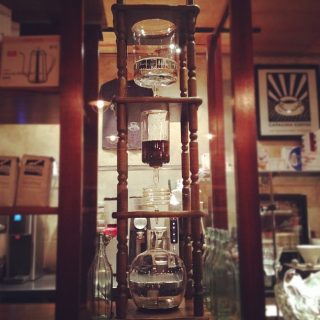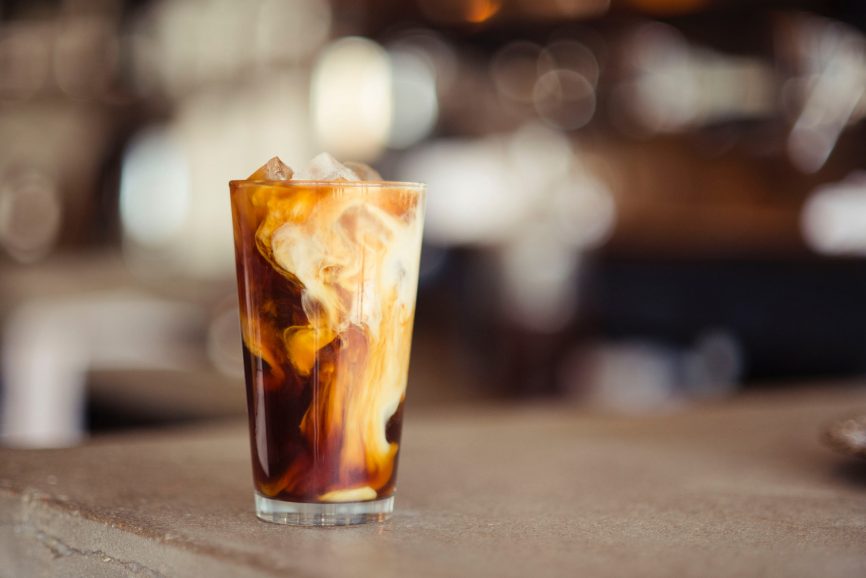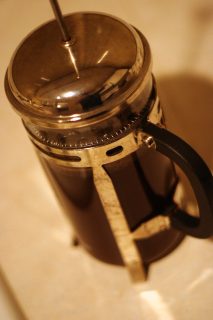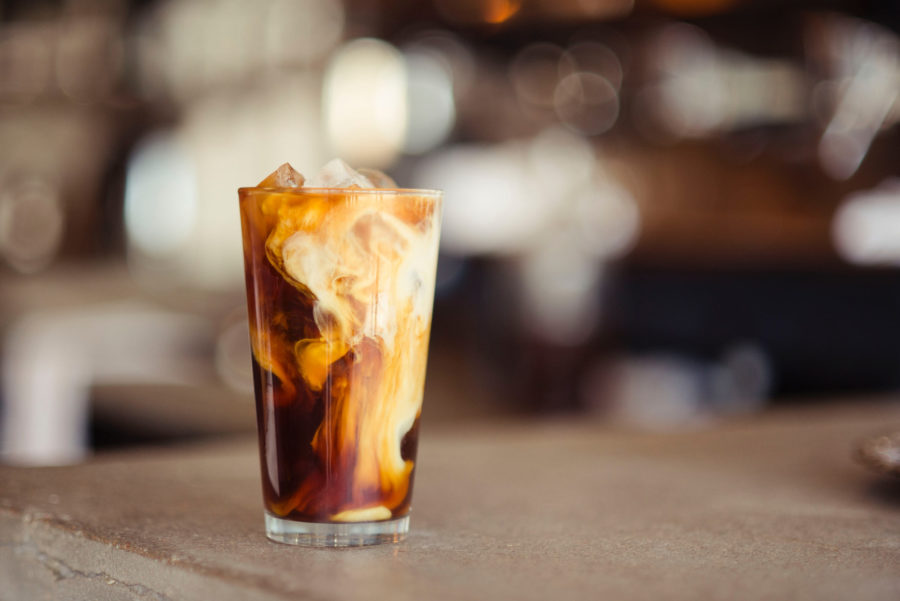I’ve read plenty of tutorials on making your own cold-brew coffee in a French Press before (Home Grounds has a great guide), but it wasn’t until today that I realized just how easy (and tasty) it can be!

Photo credit: AllisonHiromi via Flickr
My good friend Matthew Haynes, Head Roaster at Inland Seas Coffee, has a beautiful glass cold-brew maker that serves double-duty as a brewer and an art piece, but there are also plenty of more economical choices for the home cold-brewer, like the popular Toddy system.
Did you know that you can easily make great tasting cold-brew coffee at home with items you likely already have lying around? I’ll show you a few ways you can be drinking great cold-brew coffee by tomorrow morning!
What is cold-brew coffee?
Cold-brew coffee is a style of coffee that uses time, rather than heat, to extract the oils and flavors from the coffee beans. The resulting beverage, traditionally served over ice, is less bitter than traditionally-brewed coffee but is also often more caffeinated, making it a popular choice for a cool drink on a hot summer day full of activities.

Now tell me that doesn’t look amazing. Photo credit: Demi DeHerrera via Unsplash
Even just a few years ago, cold-brew was a specialty largely relegated to small coffee shops, but recently companies like Starbucks and La Colombe have begun packaging cold-brew coffee for retail.
It’s important to note, however, that cold-brew coffee is not the same as “iced coffee” – cold-brew coffee is brewed by steeping coffee grounds for extended periods of time (often twelve hours or more), while iced coffee is often regular coffee served over ice. You can think of it as sun tea served over ice vs. iced tea.
Brewing your own cold-brew coffee
Brewing your own cold-brew coffee is amazingly simple, with the only ingredients being ground coffee, water, and time. Naturally, the quality of the first two ingredients make a difference: a fresh-roasted coffee and filtered water will give you the best flavor, and the beans should be ground as close to the time of brewing as possible.
Brewing in a French Press

Photo credit: Dave Shea via Flickr
The way I chose to go about making my cold-brew was using my French Press; I ground the beans as coarse as my grinder would allow (just as I would if were making a French Press), added water (I typically use the top of the Bodum logo as a fill-line, but you want to target a ratio of 1:4 or 1:5 between coffee and water), stirred until everything was well-mixed, then set the French Press aside on the countertop overnight.
That’s really all it takes.
This morning, I filled a glass with ice, slowly depressed the plunger on the French Press (you want to avoid agitating the grounds to avoid any escaping the French Press), and poured my cold-brew coffee. I opted to pour the coffee through my go-to Hario dripper with a pre-rinsed filter to help catch any extra sediment, but that step’s completely optional.
The French Press produced about two large servings (the capacity on most French Presses is about 34oz), so what I couldn’t fit in my glass I was able to store in a bottle to keep in the fridge for tomorrow morning.
Brewing with the bare-minimum equipment
The beauty of cold-brew coffee is that it’s incredibly easy to make, can keep for weeks in the fridge, and takes well to flavor additives like milk, cream, and flavored syrups (not that it needs them, of course). If you don’t have a French Press, you can still make cold-brew coffee at home with the following household items:
- A large pitcher or jar: this will be where the coffee will be brewed, so it should be large enough to hold the amount of coffee you wish to cold-brew. You should have a way to cover it (either a lid or something you can rest over the top), and I’d recommend glass over plastic to avoid the vessel imparting flavor on the coffee. A large mason jar is perfect for brewing.
- A coffee grinder: For easy filtration, a coarse coffee grind is preferred. If you don’t have a grinder handy, Home Grounds has a guide to some of the best burr grinders under $100, as well as tips on grinding coffee without a grinder.
- A method to filter the grounds: This could be as simple as a cheesecloth; the goal is to remove all the sediment (grounds) from the cold-brew after brewing. I like using a coffee dripper because it can fit right over the container I’m pouring into, but even a simple drip coffee pot’s basket with a filter should suffice. For best results, rinse the filter with water before using it to remove some of the paper-y flavor.
Update: July 22, 2018
It seems this post helped inspire Cork and Java to produce a video tutorial on brewing cold-brew coffee in a French Press, if you’re more of a visual learner:
Happy brewing!




Leave a Reply